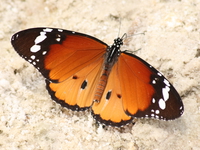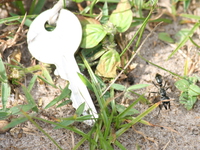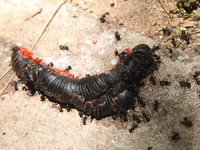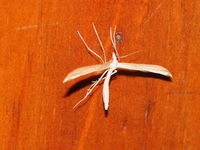insects
A butterfly is an insect of the order Lepidoptera. Like all Lepidoptera, butterflies are notable for their unusual life cycle with a larval caterpillar stage, an inactive pupal stage, and a spectacular metamorphosis into a familiar and colourful winged adult form. Most species are day-flying so they regularly attract attention. The diverse patterns formed by their brightly coloured wings and their erratic yet graceful flight have made butterfly watching a fairly popular hobby.
Butterflies comprise the true butterflies (superfamily Papilionoidea), the skippers (Superfamily Hesperioidea) and the moth-butterflies (Superfamily Hedyloidea). Butterflies exhibit polymorphism, mimicry and aposematism. Some are known to migrate over large distances. Some butterflies have evolved symbiotic and parasitic relationships with social insects such as ants. Butterflies are important economically as one of the major agents of pollination. In addition, a number of species are pests, because they can damage domestic crops and trees.
Culturally, butterflies are a popular motif in the visual and literary arts.
it bit me this morning
Ants are eusocial insects of the family Formicidae and, along with the related families of wasps and bees, belong to the order Hymenoptera. They are a diverse group of more than 12,000 species, with a higher diversity in the tropics. They are known for their highly organized colonies and nests, which sometimes consist of millions of individuals. Individuals are divided into sub-fertile, and more commonly sterile, females ("workers", "soldiers", and other castes), fertile males ("drones"), and fertile females ("queens"). Colonies can occupy and use a wide area of land to support themselves. Ant colonies are sometimes described as superorganisms because the colony appears to operate as a unified entity.
Ants have colonized almost every landmass on Earth. The only places lacking indigenous ant species are Antarctica, Greenland, Iceland, parts of Polynesia, the Hawaiian Islands, and other remote or inhospitable islands. When all their individual contributions are added up, they may constitute up to 15 to 25% of the total terrestrial animal biomass.
Termites, sometimes called white ants, are not closely related to ants, although they have similar social structures. Velvet ants, although resembling large ants, are wingless female wasps.
The mosquitos are insects which make up the family Culicidae. They have a pair of scaled wings, a pair of halteres, a slender body, and long legs. The females of most mosquito species suck blood (hematophagy) from other animals, which has made them the most deadly disease vectors known to man, killing millions of people over thousands of years and continuing to kill millions per year by the spread of diseases.
Length varies but is rarely greater than 16 mm (0.6 inch), and weight up to 2.5 mg (0.04 grain). A mosquito can fly for 1 to 4 hours continuously at up to 1�2 km/h travelling up to 10 km in a night. Most species are nocturnal or crepuscular (dawn or evening) feeders. During the heat of the day most mosquitos rest in a cool place and wait for the evenings. They may still bite if disturbed.




